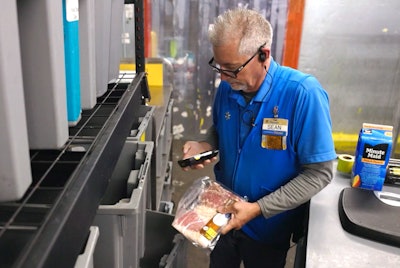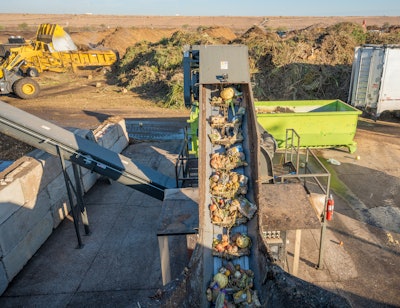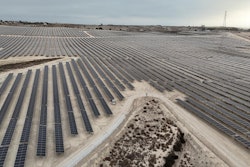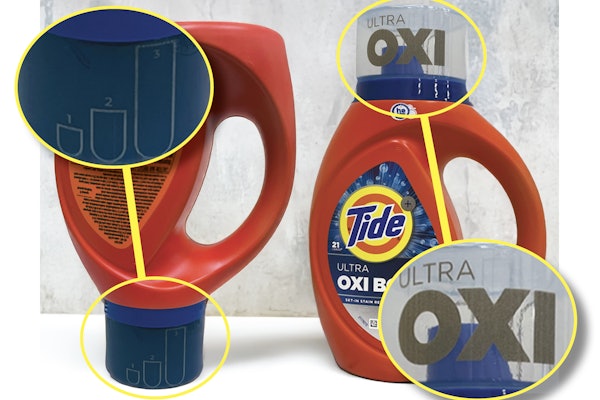
While the CPG and retail industry is laser-focused on the recycling of packaging materials, another issue of equal importance is the recycling of the food inside that packaging when it’s no longer salable. According to national non-profit ReFED, the U.S. generated about 77.6 million tons of food waste in 2022, nearly 3.9% of which came from retailers as a result of damaged or expired items that were unsalable. Of the food waste generated by retail, 51% went to landfill and 39.5% went to compost or anaerobic digestion.
While Walmart has long had a manual, in-store system for removing expired, spoiled, damaged, or recalled food from its packaging—a process called “depackaging”—a new partnership with organics recycler Denali is enabling the retailer to depackage food more efficiently, freeing up associates for other tasks and increasing the amount of food waste going to organics recycling.
 | Read this related article, “interpack Takes Stand Against Food Waste” |
“As you know, manual processes are hard to follow,” says RJ Zanes, Walmart’s VP of Facility Services. “Ultimately you have to train entry-level associates on how to depackage. It takes time, and it’s not a clean job. You can imagine unpacking hamburger meat and throwing the packaging in one area and the meat in another. What ends up happening is you have people who violate the process, and our diversion rate is not getting to where it needs to be.”
Before rolling out the new Zero De-Pack program, Walmart executed a proof of concept in the Phoenix market. As Denali Chief Revenue Officer Ilia Kostov shares, Denali has been working with depackaging technologies for years in several key markets. In Phoenix, it operates three depackaging and recycling facilities: one specializing in beverages in plastic, aluminum, and other containers, as well as preprocessing of cooking oils; one that handles dry, unsalable foods such as snacks, breads, pasta, candy, flour, and other products, which are further processed into animal feed; and one that handles unsalable food and food waste from grocery stores, cafeterias, stadiums, restaurants, and more. The third facility accepts a diverse range of materials, including meats, fish, fruits, and vegetables, along with packaging and contamination associated with post-consumer waste such as plates and packaging.
 Denali aggregates like packaging and products to the degree possible before processing it in its depackaging equipment.
Denali aggregates like packaging and products to the degree possible before processing it in its depackaging equipment.
Denali’s depackaging and recycling process operates in a somewhat similar fashion to a municipal recycling facility (MRF). First, Denali picks up packaged food waste from the participating operations, which collect and place the waste into organic refuse bins. The waste trucks then haul the material either to a transfer station or to a facility equipped with depackaging technology, where the materials are dumped onto a tipping floor. Next, the packaged food is presorted as much as possible to aggregate similar materials. After sortation, tractors pick up the waste and feed it into the appropriate depackaging equipment. Once in the equipment, the materials are processed with the help of grinders, blowers, and separators, with the organic waste existing a funnel on one side and the packaging on the other.
According to Kostov, the equipment is capable of processing between 15 and 30 tons of material per hour per line and can separate as much as 97% of all trash from organic food waste. The resulting stream of organic material is then further processed into animal feed, compost, or renewable energy. When possible, the packaging is recycled. “For example, we would aggregate like beverage material in aluminum cans and run those through the process, aggregating and recycling the aluminum,” explains Kostov.
As with any pilot, Zanes says several learnings resulted for both Walmart and Denali. For the organics recycler, the POC testing provided insight on how they would need to evolve the technology over time. For Walmart, one key insight was on the need to close the gap in infrastructure. “We had to figure out how we could create more density with various other partners to allow us to become more and more efficient with regard to the infrastructure,” says Zanes.
“There were also some smaller findings with regard to the staging of the fresh goods and the placement of organics recycling bins to make it easy for our operators and for Denali, as well as determining the appropriate pickup cycles,” he adds. “So all of those little processes had to be worked out to streamline the program and ensure we were gaining the labor efficiencies and the diversion rates we intended.”
In late June 2024, Walmart rolled out Zero De-Pack to 1,400 of its Walmart and Sam’s Club stores in more than 16 U.S. markets nationwide, with plans for expansion. Based the testing, the new process is expected to increase the volume of potentially reusable organic content by more than 60% and reduce Walmart’s compactor trash by an estimated 12%. While Zanes was unable to provide an exact number for the tonnage of waste that will be diverted, he did say that “it is a substantial food tonnage number.”
Kosov was more forthcoming. He says, “Thanks to this innovation, we expect to recycle about 200,000 pounds of food waste from each store that utilizes our depackaging services.”
 | Read this related article, “Upcycling Tackles Food Waste in Manufacturing” |
Commenting on Walmart’s desire to share news of its work with Denali, Zanes says: I think the more we can get this out there, for me, the importance is showcasing to the world the opportunity to continue to leverage various technologies and recycling pathways so we can create that full circle and keep things out of the landfill, repurposing it.
“It’s not just about lowering methane emissions, it’s about doing the right thing. And the more people we can get on board, the more efficient at recycling we all become as a society, the more efficient the recycling process becomes because of the density creation. And ultimately, we’re able to repurpose these assets that people have grown or raised and ensure they’re not wasted, and that the life that we are consuming is not wasted and can be repurposed. And that’s the beauty of it for me, and I think for Walmart.
“We want to make sure others know about it. The purpose of us publicizing this is to make sure others can get on board and help change the dynamic. We all know that ultimately the U.S. has struggled with driving consistency in recycling, and frankly, it’s due to the complexities within. We have to simplify the processes, and the more we can simplify the processes and use technology for accuracy, the better off we will all be as a society.” PW

























